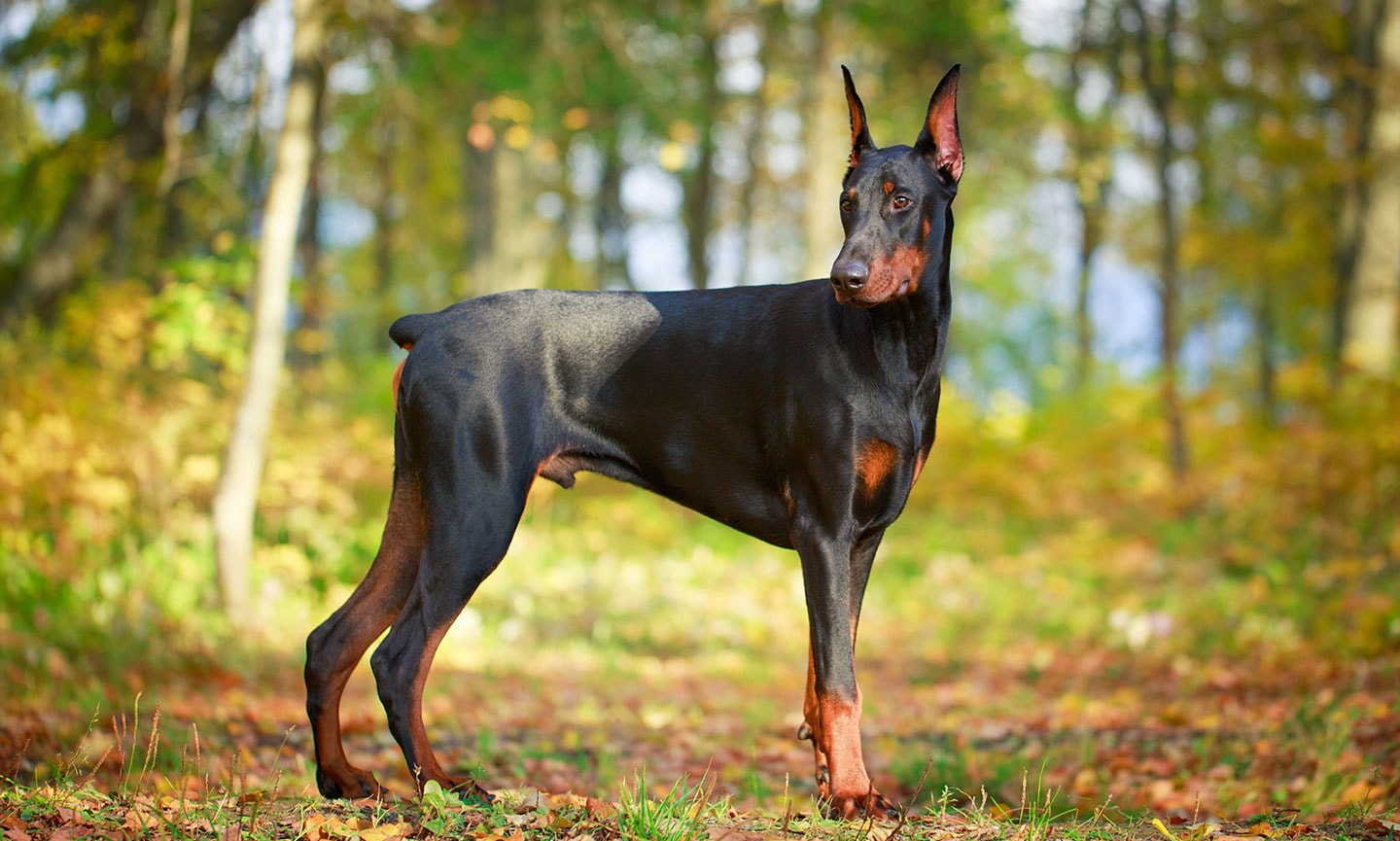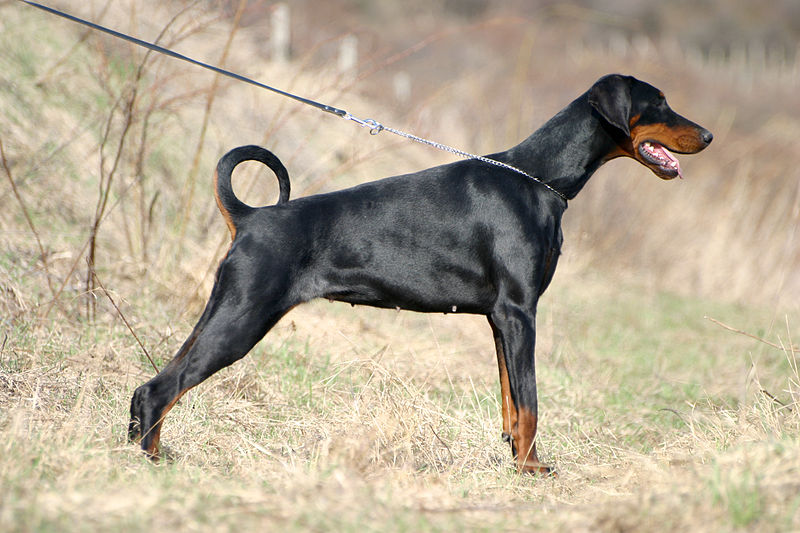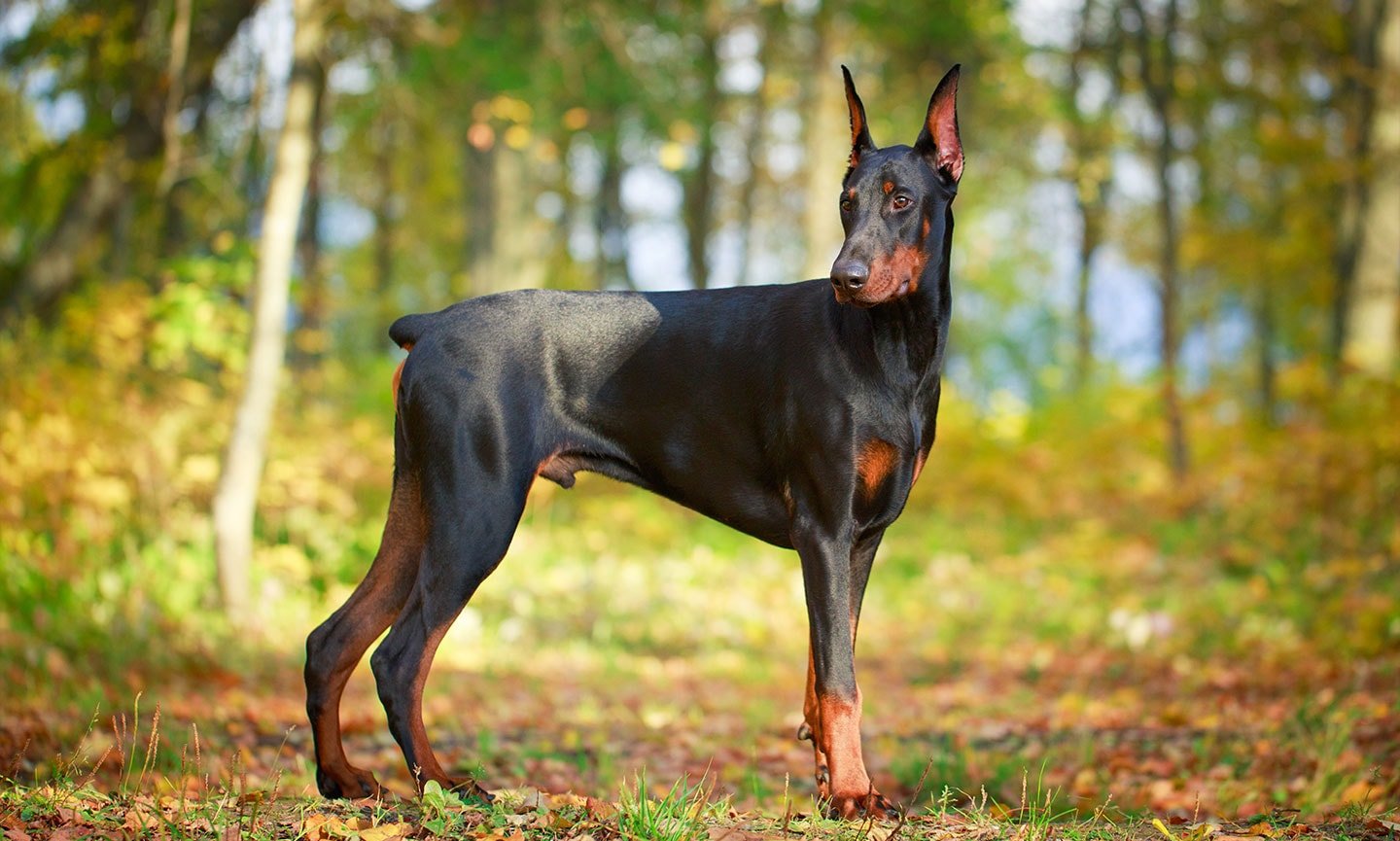Did you know that the name “Doberman” is actually short for Dobermann Pinscher? This breed of dog was developed by a German tax collector named Louis Dobermann in the late 19th century. Fascinated by the idea of a loyal and protective canine companion, Dobermann set out to create a breed that would excel both as a guard dog and a family pet.
The Dobermann Pinscher quickly gained popularity for its intelligence, agility, and loyalty. Today, Dobermans are known for their sleek and muscular appearance, as well as their ability to serve as working dogs in various fields such as search and rescue, police work, and therapy. It is important to note that responsible ownership and proper training are essential in harnessing the full potential of this remarkable breed.
The name “Doberman” is actually short for “Dobermann Pinscher.” This breed of dog was named after its creator, a German tax collector named Louis Dobermann. He developed the Dobermann Pinscher by selectively breeding various dog breeds to create a versatile, loyal, and protective companion. Today, the Doberman is known for its intelligence, athleticism, and keen sense of loyalty, making it a popular choice for both working and family dogs.

What is Doberman Short For?
Dobermans are a popular breed of dogs known for their loyalty, intelligence, and protective nature. But have you ever wondered what the term “Doberman” actually means? In this article, we will explore the origins and meaning behind the name “Doberman” and delve into the fascinating history of these remarkable dogs.
1. The Origins of the Doberman Breed
To understand what “Doberman” is short for, we first need to look at the origins of the breed. The Doberman Pinscher was developed in the late 19th century in Germany by a tax collector named Karl Friedrich Louis Dobermann. Dobermann wanted a loyal and protective dog to accompany him during his rounds, so he began breeding his own dogs.
Dobermann’s aim was to create a versatile working dog that combined strength, intelligence, and loyalty. He started by crossing several breeds, including the Rottweiler, Weimaraner, German Pinscher, and Greyhound. Through selective breeding, he eventually developed a breed that exhibited all the qualities he desired.
2. The Name “Doberman”
The name “Doberman” is derived from the surname of the breed’s creator, Karl Friedrich Louis Dobermann. It is believed that the name was given in honor of Dobermann’s efforts in developing the breed and his role in its early history.
3. The Original Purpose of Dobermans
Dobermans were initially bred as working dogs, primarily for guarding and protection. Due to their strength, agility, and high intelligence, they were often used as police and military dogs. Their loyal and protective nature made them ideal for these roles.
Over time, Dobermans also gained recognition as excellent family pets. Their natural instinct to protect their loved ones, combined with their gentle and affectionate nature towards their family, makes them a beloved choice for many households.
4. The Doberman Standard
Dobermans are recognized by various kennel clubs, and each club has its own set of standards that define the ideal characteristics of the breed. These standards specify the appearance, temperament, and physical attributes that a Doberman should possess.
According to the American Kennel Club (AKC), the Doberman Pinscher should have a sleek, muscular body, a square-shaped frame, and a graceful yet powerful gait. The coat is smooth, short, and dense, and the acceptable colors include black, red, blue, and fawn.
5. The Doberman’s Personality Traits
Dobermans have a reputation for being loyal, intelligent, and highly trainable. They are known for their protective instinct and can be wary of strangers, making them excellent guard dogs. However, with proper socialization and training, they can also be friendly and outgoing around familiar people.
These dogs thrive on human companionship and are happiest when they are given plenty of love, attention, and mental stimulation. They require regular exercise to keep them physically and mentally fit.
6. The Popularity of Dobermans
Dobermans are a popular breed throughout the world. Their striking appearance, combined with their protective nature and intelligence, has made them a sought-after choice for both families and individuals. They excel in various roles, including search and rescue, therapy work, and competitive dog sports.
7. Common Health Issues in Dobermans
Like any breed, Dobermans are prone to certain health issues. Some of the common health concerns in Dobermans include:
- Dilated Cardiomyopathy (a heart condition)
- Von Willebrand’s Disease (a bleeding disorder)
- Hip Dysplasia (a malformation of the hip joint)
- Hypothyroidism (a condition affecting the thyroid gland)
Regular veterinary check-ups, a balanced diet, and proper exercise can help in maintaining the health and well-being of Dobermans.
8. Training and Socialization for Dobermans
Training and socialization are essential for Dobermans to ensure they grow into well-rounded and obedient dogs. Early socialization helps them become comfortable with various environments, people, and other animals. Obedience training, including commands such as sit, stay, and come, is crucial for their safety and the safety of others.
Positive reinforcement techniques, such as rewards and praise, work well for training Dobermans. Consistency, patience, and firm but gentle handling are key to their successful training.
9. Owning a Doberman: Responsibilities and Considerations
Owning a Doberman comes with certain responsibilities and considerations. Here are a few things to keep in mind:
- Dobermans require regular exercise to prevent behavioral issues.
- They thrive on human companionship and may experience separation anxiety if left alone for long periods.
- Proper socialization from a young age is crucial to ensure they grow into confident and well-behaved dogs.
- Dobermans may not be suitable for homes with small children or other pets, as their protective nature can lead to unpredictable behaviors.
10. Conclusion
In conclusion, the name “Doberman” is derived from the surname of the breed’s creator, Karl Friedrich Louis Dobermann. Dobermans were originally developed as versatile working dogs with protective instincts. They are known for their loyalty, intelligence, and striking appearance. However, owning a Doberman comes with responsibilities, including proper training, socialization, and providing them with physical and mental stimulation. With the right care and environment, Dobermans can make loving and devoted companions.
Key Takeaways
- The term “Doberman” is short for “Doberman Pinscher,” a breed of dog known for its loyalty and protective nature.
- The Doberman Pinscher was developed by a German tax collector named Louis Dobermann in the late 19th century.
- Dobermans are intelligent and trainable dogs, often used in police and military work.
- They have a sleek, muscular build and are known for their striking black and tan coat.
- Dobermans require regular exercise and socialization to keep them happy and well-behaved.
Frequently Asked Questions
The following are some commonly asked questions about the abbreviation “Doberman.”
1. What does Doberman stand for?
Doberman is short for “Doberman Pinscher,” which is the full name of the dog breed. It is named after its creator, a German tax collector named Louis Dobermann.
The Doberman Pinscher was developed in the late 19th century in Germany and was originally bred for protection and guarding. They are known for their intelligence, loyalty, and protective nature.
2. How did the Doberman breed get its name?
The Doberman breed got its name from Louis Dobermann, who is credited with creating the breed. As a tax collector, Dobermann found himself in dangerous situations and desired a protective dog that could accompany him during his work.
He selectively bred dogs with certain traits, including loyalty, strength, and intelligence, and created what is now known as the Doberman Pinscher.
3. What are the characteristics of a Doberman Pinscher?
Doberman Pinschers are known for their sleek and muscular appearance. They have a short coat, which comes in various colors such as black, red, blue, and fawn. They are medium-sized dogs with a strong and athletic build.
They are intelligent, loyal, and protective, making them excellent guard dogs. They require regular exercise, socialization, and training to thrive.
4. Are Dobermans aggressive?
Dobermans have a reputation for being protective and fearless, but they are not inherently aggressive. Like any dog, their behavior is influenced by their upbringing, training, and socialization.
Proper training, socialization, and responsible ownership play a vital role in shaping a Doberman’s temperament. With the right care and training, Dobermans can be gentle and loving family pets.
5. Are Dobermans good family pets?
Yes, Doberman Pinschers can make excellent family pets. They are known to be loyal, protective, and affectionate towards their owners.
However, it is essential to note that Dobermans require proper socialization, training, and supervision around children and other pets. Early and ongoing socialization is crucial to ensure they grow up to be well-rounded and well-behaved dogs.

Try at your own risk ⚠️ 🤣 #short#shorts#suavexavier#reels
In short, the term “Doberman” is commonly used as a shortened version of the breed’s full name, which is Doberman Pinscher.
The Doberman Pinscher is a breed of dog known for its loyalty, intelligence, and protective nature.
